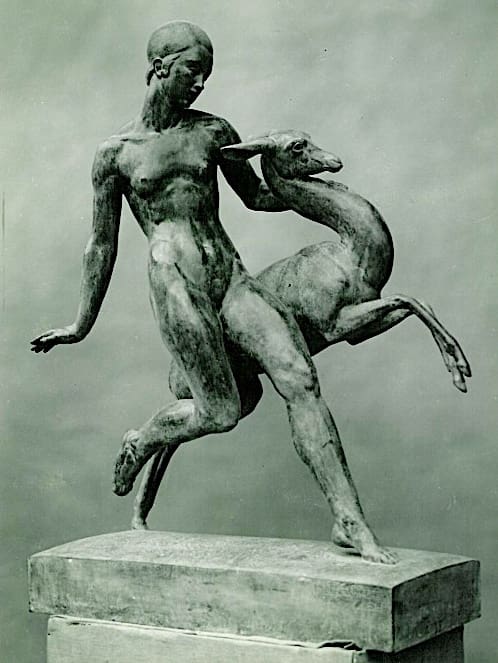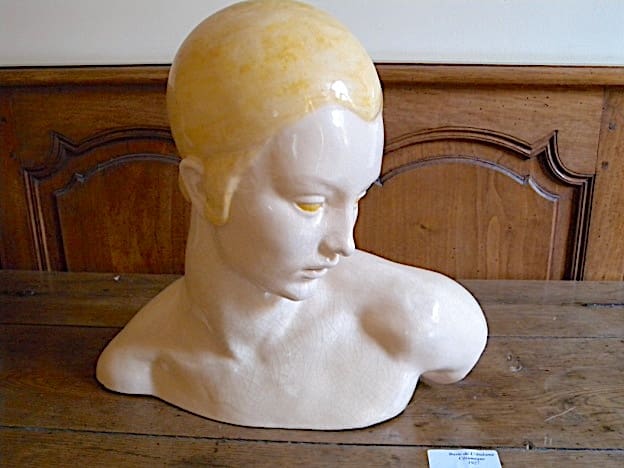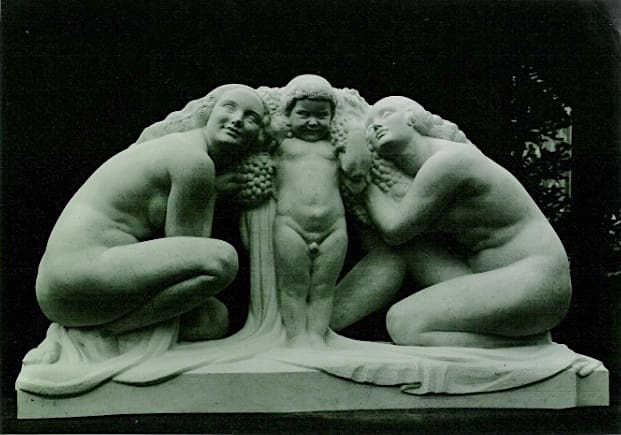Pierre Traverse – Important Historical Information

All pictures in this blog are courtesy of the Traverse family. We do not own these pictures and further use of them is prohibited without the express consent of the Traverse family.
I was beginning to believe that I could no longer be shocked after 50 years of experience trading Art Deco but on Wednesday 15th November 2023 my perception was shattered.

I received an email from a gentleman in France inquiring about the cost of a Pierre Traverse statue I have on site. I informed him of the price and wasn’t expecting to hear back from him but he did reply and that reply shocked me and gave me goosebumps. He is the great, great grandson of Pierre Traverse.
I replied that it was an honour to be speaking to him and commented on how proud he must be of his ancestor. He explained that his father, in the last 15 years had obsessed over the life of Pierre Traverse and was kind enough to forward us a document of over 120 pages filled with information gathered during those years. This was beyond anything I could have expected to receive on a cold, drizzly Wednesday.
I was surprised and excited to find out that Pierre also produced many ceramic pieces under the name of Aladin which may have been a pseudonym (Please read our follow up blog for further information on this subject). I have owned many Aladin ceramic items over the years and still have a number in stock. This fact alone will require a second part to this blog post. Pierre would call these ceramic pieces his “food” works (bread and butter).
Below is just a fraction of information contained in the first 50 pages of the document, arranged as a time line of works, that the Traverse family have very graciously allowed us to share with the world.
Pierre Traverse (1892 – 1979) – was a French sculptor from the art deco period who worked mainly in bronze, stone, marble and plaster producing stylised allegorical statues and repeats of classical goddesses in the modern art deco style.
Born 1st April 1892 in St. Andre de Cubzac, Dordogne, France. Pierre was one of 7 children (4 sisters and 2 brothers) and by 1908 had produced his first known sculpture “Le Chien” (The Dog).

Pierre enlisted in Bergerac ahead of his call and served as an Infantry lieutenant during the 1st world war but was seriously wounded in 1916 at the Battle of Mesnil.

In 1919 Pierre married Valentine Foulon and they had 2 children.
Pierre then studied under Jean-Antoine Injalbert (1845 – 1933), and exhibited at the Salon des Artistes Francais of which he was an Hors-Concours member, the Salon d’Automne and the Salon des Artistes Decorateurs.
He received a silver medal in 1921, a gold medal in 1926 and a diploma of honour in 1937 at the Exposition Internationale in Paris. He was also awarded a Medal of Honour in 1942 and was decorated with the Legion d’Honneur in 1938.
Pierre’s work can be found in the Musee du Petit Palais in Paris and other fine collections held internationally today. One of his most well known art deco statues is his Diane and Deer statue named L’Atalante.
He produced items in a variety of sizes, some of them much larger than life-size. Pierre also produced paintings, mainly of scenery, in his early career.
Pierre died on the 4th July 1979 in Paris and is buried in Neauphle le Château near his wife who predeceased him by 15 years.












1930 – Création d’Eve. Is a huge plaster statue owned by the Mont de Marsan museum. It is 2.5 meters high. This statue was also created in smaller sizes in bronze.

1930/31 – A huge water fountain named Neptune was designed for Randolph Hearst but never went into production.


1931 – “Baigneuse” (bather). A plaster was produced.



The original plaster cast was 2.15 meters high and was shown in the Mont de Marsan museum.




1935 – Diane et ses Compagnes poursuivant Actéon (Diana and her companions pursuing Actaeon), a gilded bronze sculpture which was exhibited at the Salon of Decorative Arts in Brussels and the Salon of French Artists.

Back to all blogs
